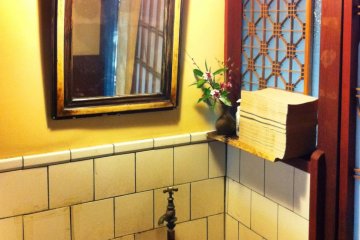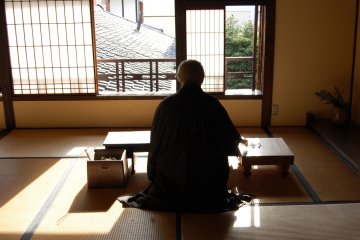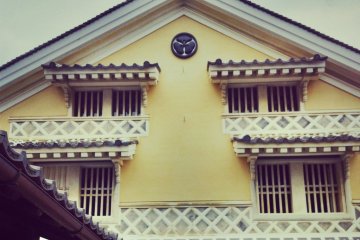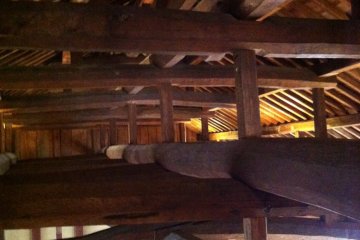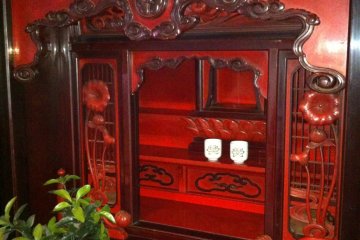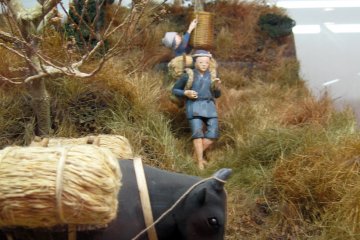Uchiko is a small town in a valley between towering mountains. From a distance, it appears as just another minor agglomeration of houses and shops, strung along a river in the middle of nowhere. But running through the center of Uchiko is a street of houses dating from the 19th century, and in their size and extravagant decoration, they’re unlike anything you would expect in such a backwater, on Japan’s smallest island.
One of the biggest and finest buildings is the Kamihaga Residence, the former home and workshop of the Kamihaga family. This family grew phenomenally rich in the Meiji period from the production of wax, and they flaunted their wealth conspicuously. You can learn all about wax and its manufacture in the museum here, but briefly, wax used to be made from the berry of a tree that grows in these parts. Local farmers would be paid a pittance to collect these berries, while a few families made fortunes processing and selling the wax. After developing a unique white wax and exhibiting it at the 1900 Paris Expo, the Kamihagas exported it to Europe and America.
The Kamihaga Residence is a wonderful confection of enormous wooden beams, roofed in weathered gray tiles, and plastered extravagantly in creamy yellow and white. While samurai took pride in their perfectly white plastered houses, merchants rejoiced in yellow, and indeed, it presents a fine sight. Although you would have no idea from the outside, the house is built around an inner garden with a variety of evergreen and flowering deciduous trees, stone and water features. The elegant colonnade that surrounds the garden has rooms for every purpose including toilets for men, women and children (I was reminded of the Tale of Goldilocks and the Three Bears), a room for ladies to adjust their kimono after a visit to the toilet, a room with no tatami mats for women to give birth, a bathroom with a round iron tub, and kitchens. Despite the finery of the decorations, these various rooms are very simple, and you can see how close people lived to nature in those days, not so very long ago.
There are countless fascinating details to be seen—the sixteen locks on the heavy front door, to keep out the farmers who rioted on occasion; the simple wooden board attached to the roof beams showing the name of the carpenter who built the wooden structure; the hooks in the façade of the building for hanging scaffolding so that the plaster could be fixed periodically. There’s so much to see and learn that it’s best if you can arrange for one of the volunteer guides to show you around. They speak good English and can tell you some fascinating things.



